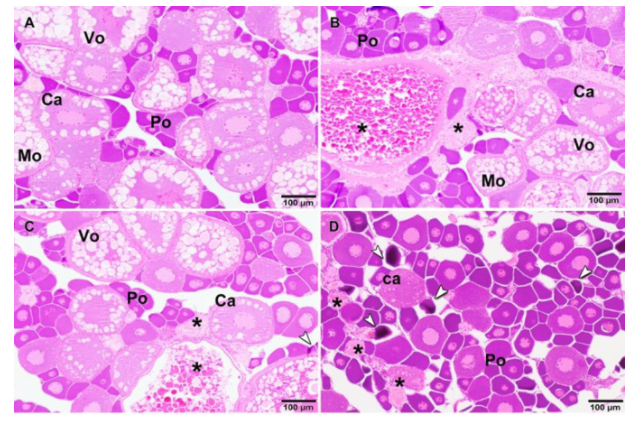Immunohistochemical expression of aromatase cyp19a1a and cyp19a1b in the ovary and brain of zebrafish (Danio rerio) exposed to different concentrations of bisphenol A
Abstract
Bisphenol A (BPA) is used to produce plastic and plastic derived products in multitude of daily utensils, being one of the industrial compounds most widely used. This endocrine disrupting chemical (EDCs) is a well-known environmental pollutant released into the aquatic environment from industrial wastewater, sewage sludge or landfill leachate. Aromatases are considered potential targets of EDCs with characteristics that make them suitable biomarkers of exposure to their effects. The main objective of our study was to evaluate the expression of cyp19a aromatase as a toxicological endpoint after BPA exposure through the identification and assessment of alterations of the main cells responsible for cyp19a1a and cyp19a1b expression in the zebrafish ovary and brain using different concentrations of BPA in water. Immunohistochemistry was used to analyze the expression of these enzymes in female zebrafish exposed and not exposed to different concentrations of BPA (1, 10, 100 and 1000 μg / L) in water (n = 6/group) for 14 days. The results obtained in this study showed that the cyp19a aromatase system, involved in the synthesis of steroid compounds, is specially located in distinct oocyte stages in the ovary (cyp19a1a) and in radial glial cells of the brain (cyp19a1b). An overexpression of these aromatases was observed after BPA exposure in zebrafish, peaking from a concentration of 10 µg/L and showing to be good biomarkers of exposure to identify the early effects of low BPA concentrations. To our knowledge, this study is the first to localize and quantify the expression of cyp19a1a and cyp19a1b in the cells of brain and ovary after fish exposure to different BPA concentrations in water.




